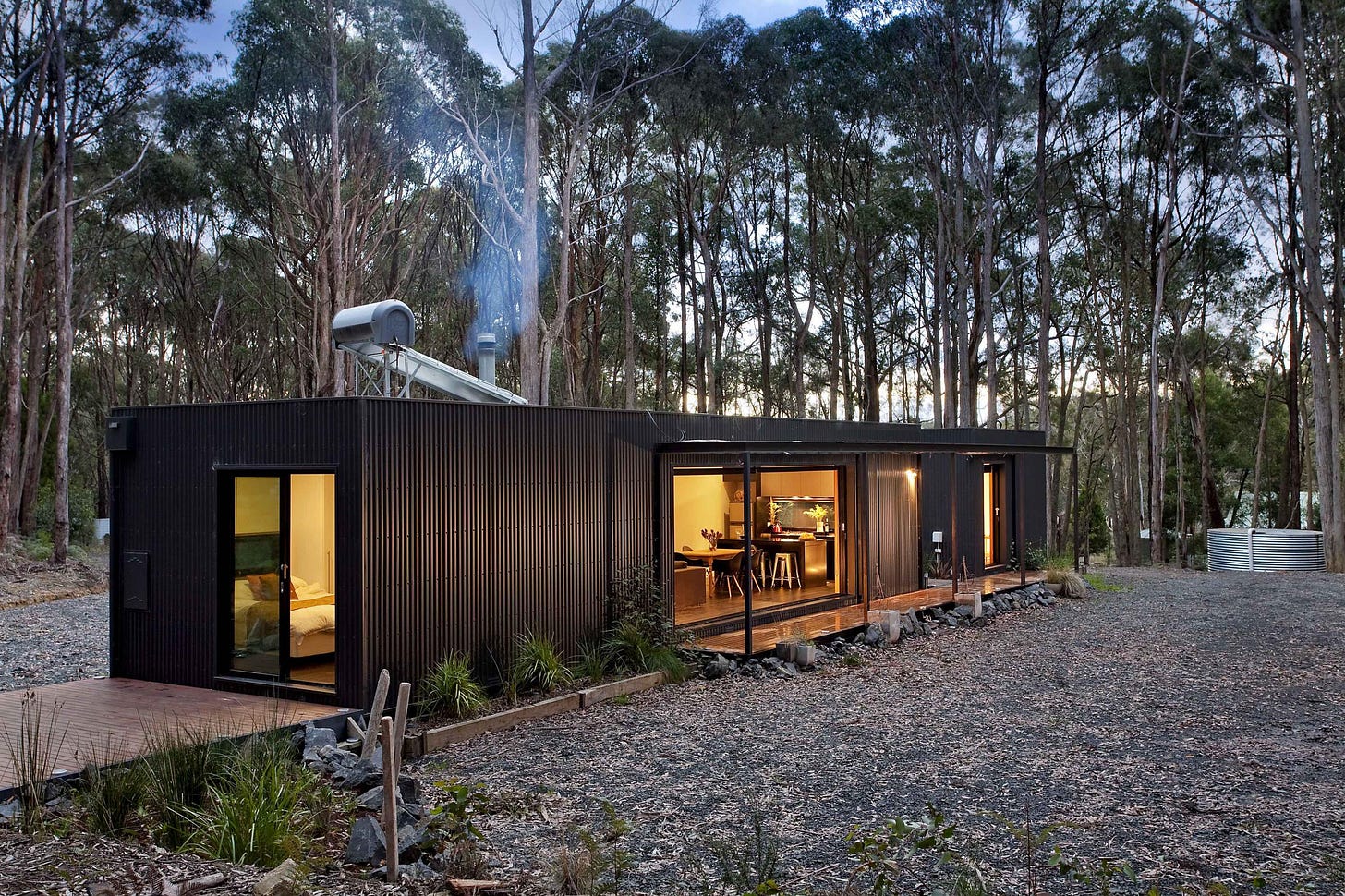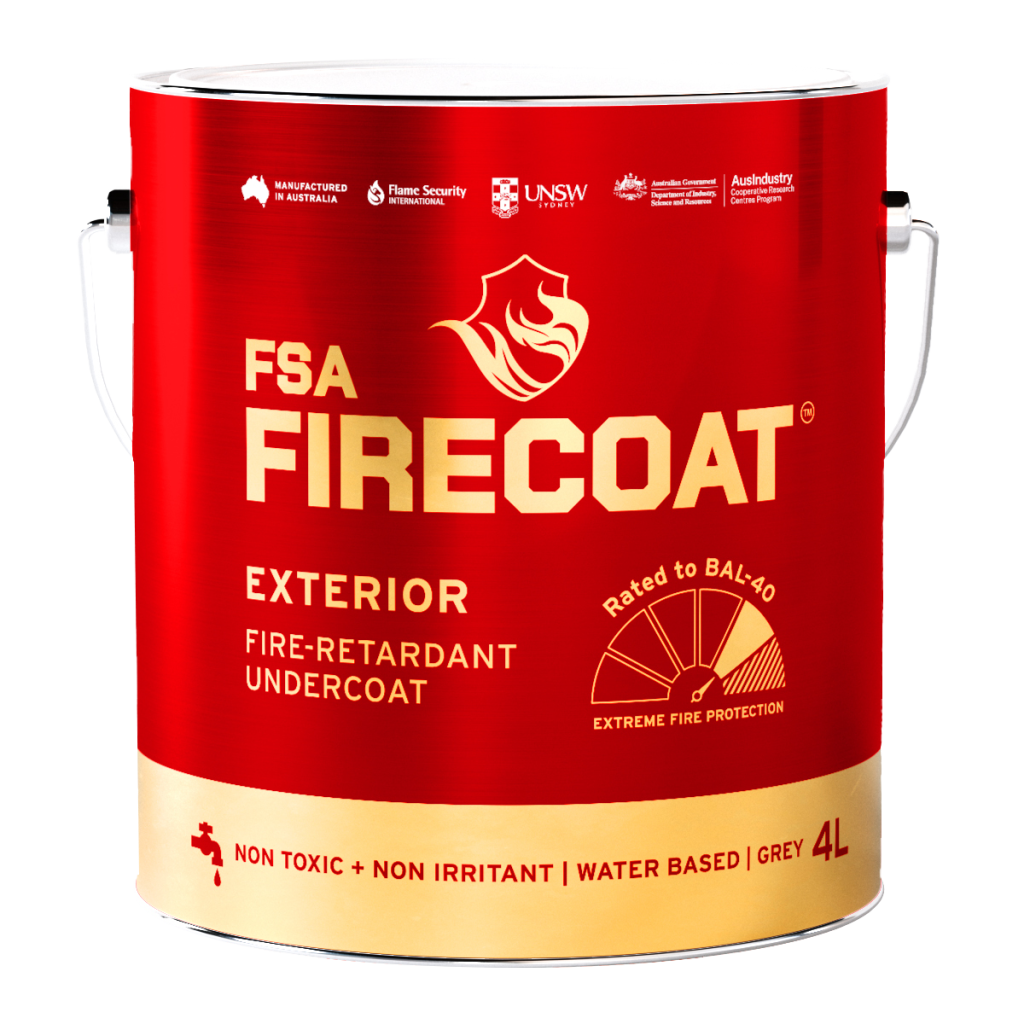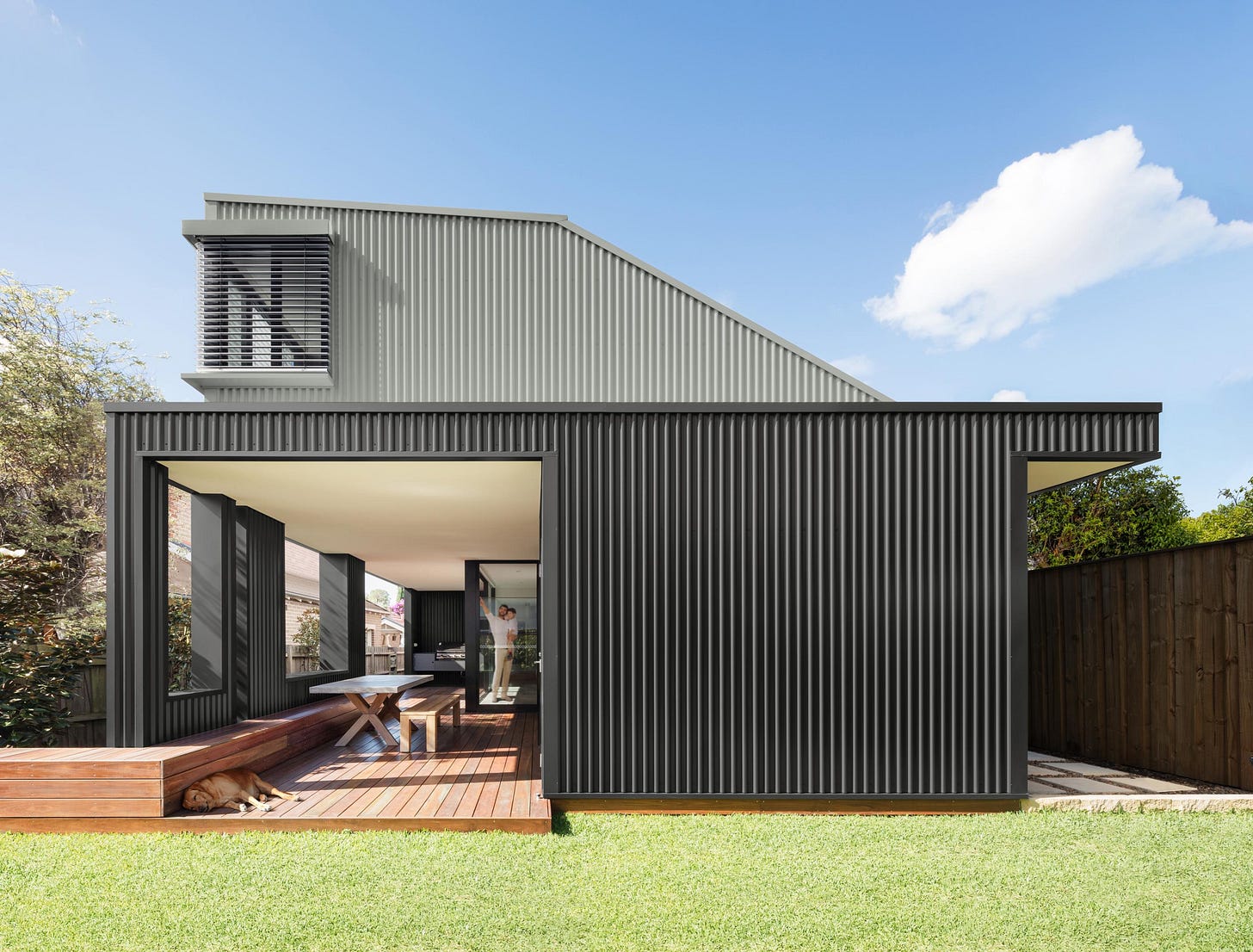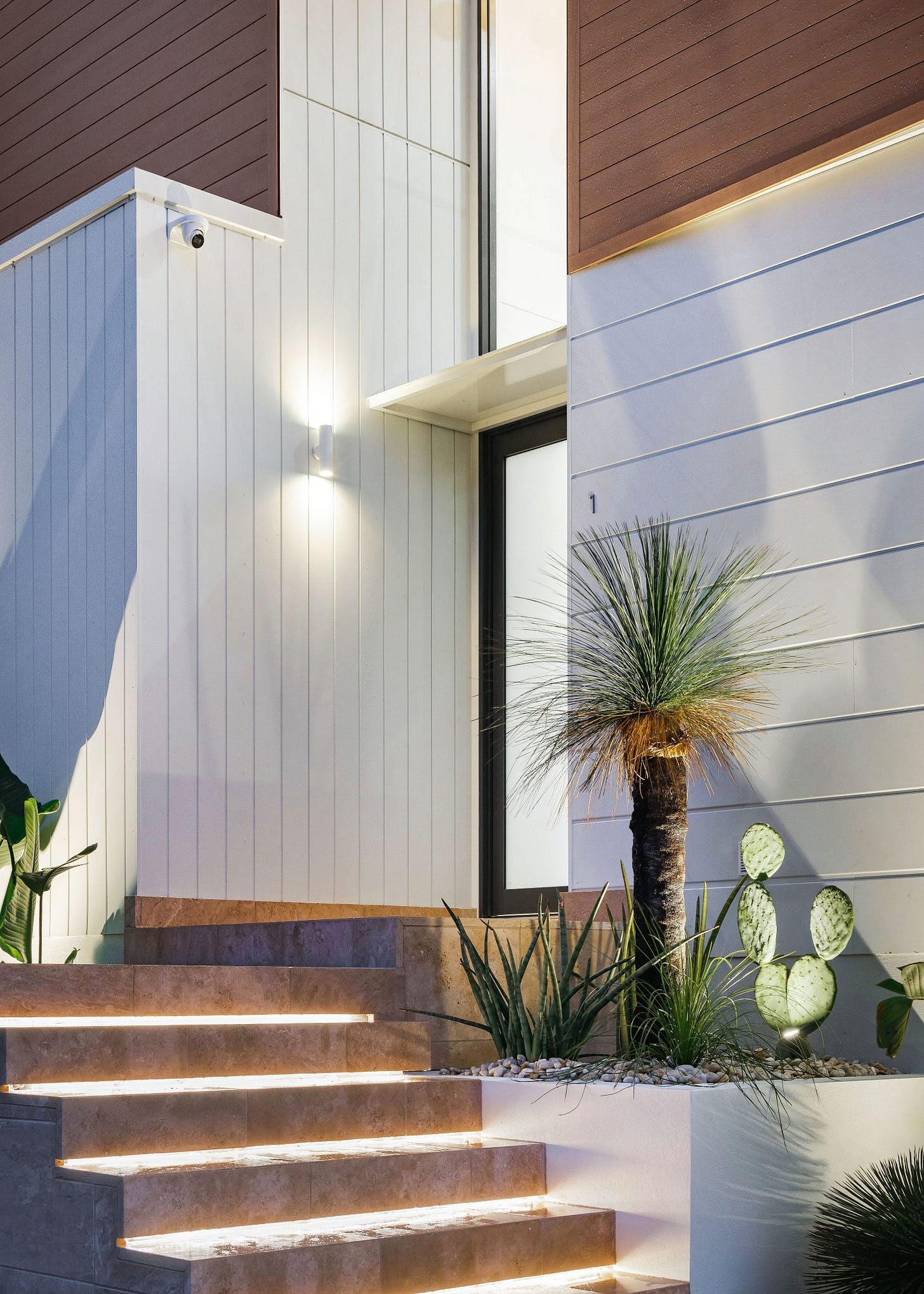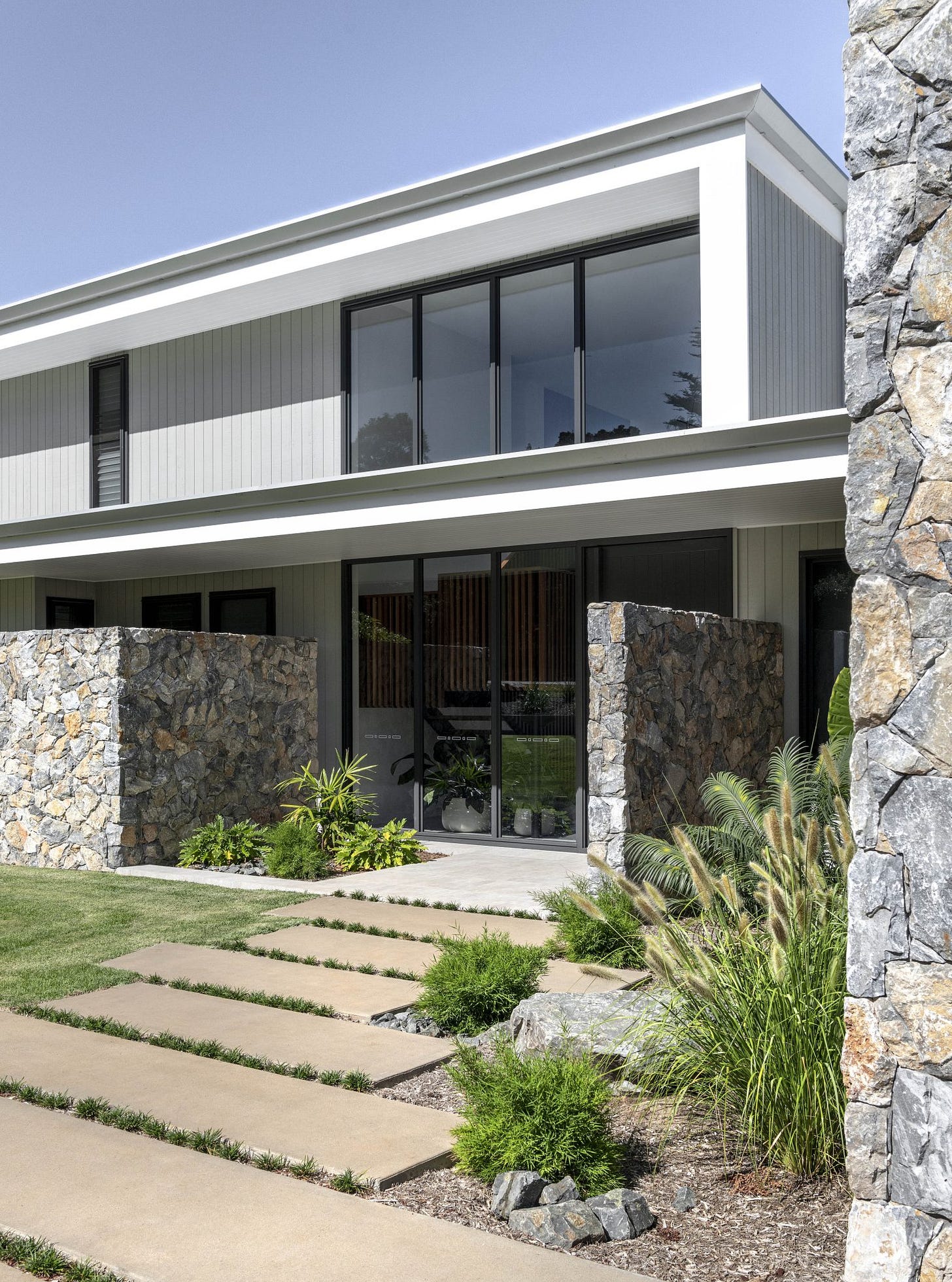One strategy for reducing the cost of the new house project is to revisit the exterior materials list (again). What choices do we have for materials which are cost-effective, lightweight, versatile, good-looking—and fire-proof? Regular readers will recall that the BAL rating has dominated our thinking all along—the “Bush Fire Attack Level” expressed in ratings from (in the case of my block) 29, to 40, to the dreaded FZ (“Flame Zone”).
Corrugated iron and timber? [photo source]
No more Flame Zone
Step One in reducing costs was to get the back end of the house out of that FZ. Though only a teensy part of the original plan fell in the FZ, that still meant materials (especially windows) would have to be of specialist, fire-resistant quality. Building in an FZ is doable—I wrote about it in this post—but expensive. So the architects have managed to truncate the building enough to get it out of that costly zone.
Corrugated steel: Fire resistant [photo source]
Corrugated Steel
As to the exterior materials for the rest of the house, we’ve always planned use of Colorbond ®️ steel, on the roof and part of the exterior walls. Why not? It’s a reasonable cost, fire resistant (rated up to BAL-FZ) and looks good. According to the manufacturer’s website:
Roofing, walling, gutters and downpipes made from COLORBOND® steel may be used as part of a compliant system in bushfire prone areas, including in the most extreme, BAL-FZ
In fact, the corrugated profile of Colorbond ®️ looks great, in my opinion—perfect for a house designed to reflect an Australian bushland setting, just like the old corrugated iron sheds I remember from the farms of my youth. A real Glen Murcutt vibe. With the added advantage that you don’t need to employ expensive bricklayers to install it.
Corrugated wall cladding in the colour “Surfmist” [photo source]
As the manufacturers say of the product used as wall cladding:
As a beautiful, long lasting exterior facade it creates depth and texture. Available in 22 core colours, including 6 in a premium Matt finish, COLORBOND® steel wall cladding also delivers a lot of practical benefits. It is easy to maintain, long lasting, lightweight and extremely durable; providing resistance to paint chipping, flaking and blistering.
Colorbond ®️ Colours in Matt finish [photo source]
Engineered Wood
Of course we don’t really want a house that looks exactly like an old farm shed. That would be taking the retro vibe too far. Fortunately there’s another lightweight material rated to BAL 29 which we can use, the engineered wood product sold as Weathertex ®️ The Weathertex ®️ product has strong environmental credentials. Their website claims:
Better than zero carbon foot print. Australian made and owned. 100% natural: 97% natural timber and 3% natural wax. Termite resistant: all sugars and starches removed. No added silica, glues, resins or formaldehydes.
It is possible to leave this product unpainted and let it weather (no pun intended) to an atmospheric grey colour, though more usually it’s painted, for longevity. I’ve discovered that for BAL 29 fireproofing, the product should be used in its primed version, with a special ‘fire coating’ undercoat paint—then your chosen colour as a top coat:
Introducing FSA FIRECOAT: the groundbreaking solution revolutionising fire protection for Weathertex timber cladding. With its cutting-edge formulation, FSA FIRECOAT offers unparalleled defense against bushfire threats, empowering homeowners to safeguard their properties without compromising on aesthetics.
By applying FSA FIRECOAT to Weathertex timber cladding, not only do you enhance the protection of your home, but you also achieve a coveted BAL-29 rating—a testament to its innovative polymer technology.
Weathertex used judiciously here and there, contrasted with the feature sandstone blade wall and the corrugated steel: I think it will work. Browse these inspirational images from Colorbond ®️ and Weathertex ®️ and see if you agree with me.





